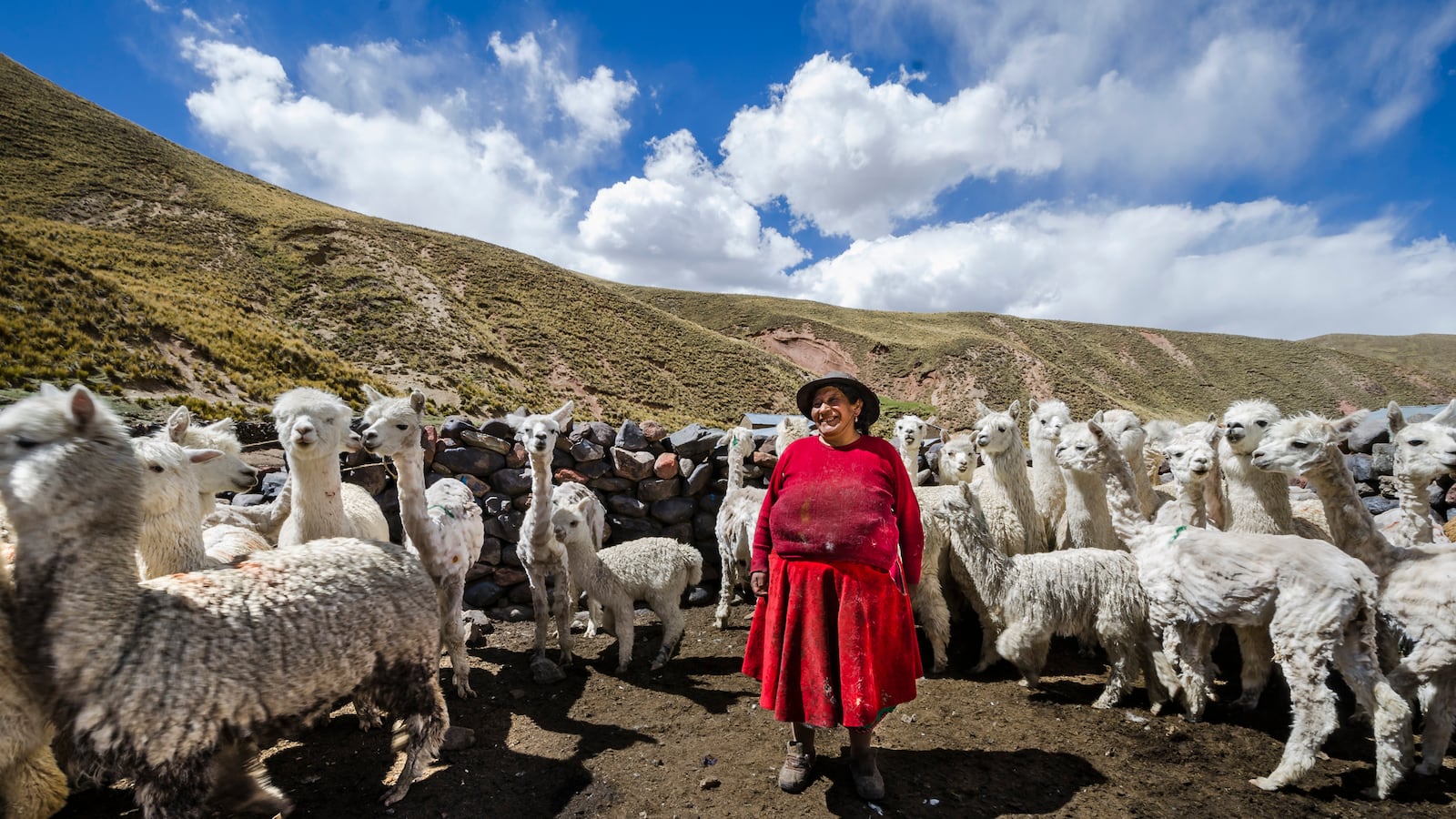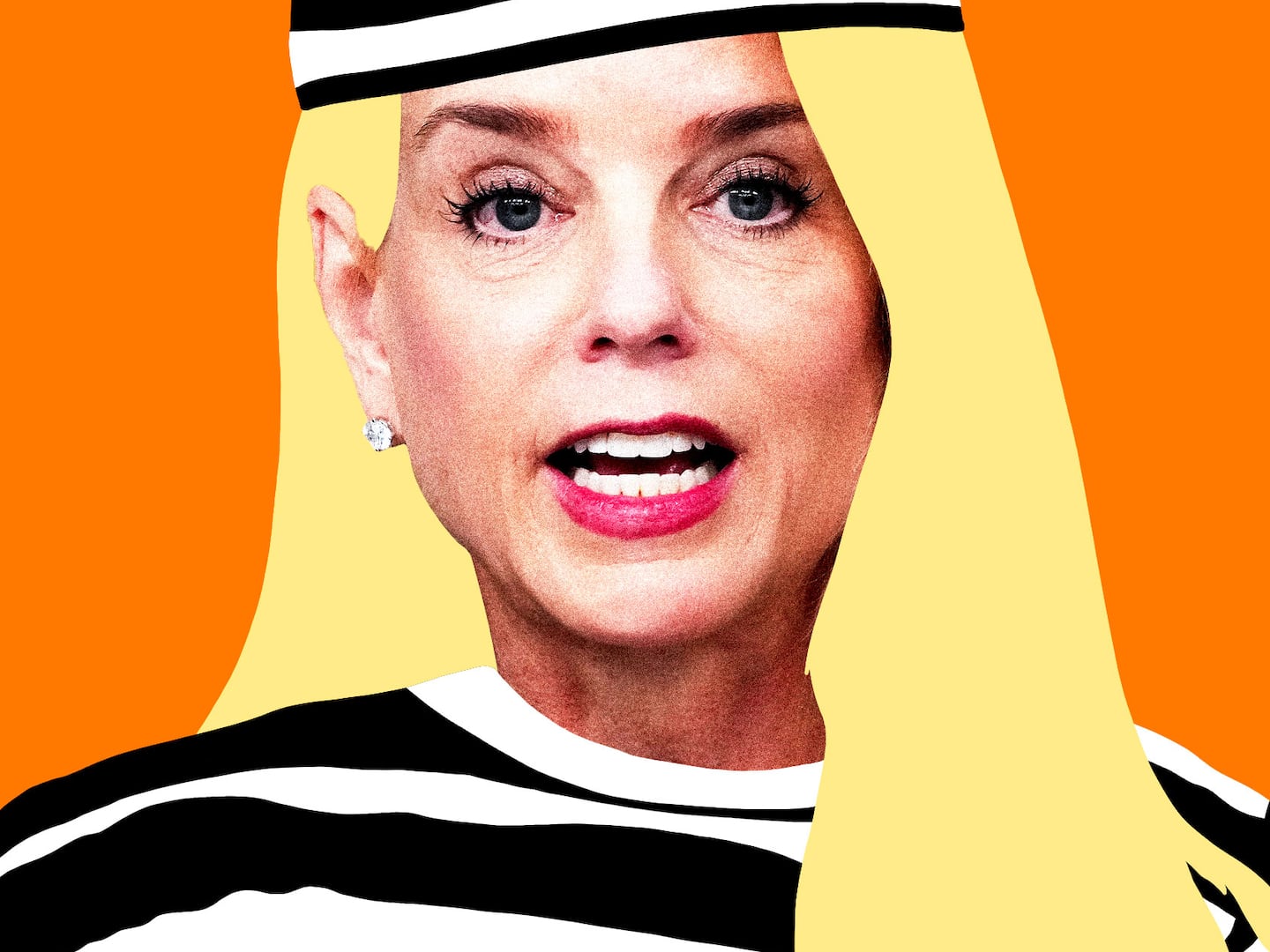
Cashmere. Merino. Mohair. Angora. Consumers are all too familiar with the luxury fibers that designers have been relying on for decades. But alpaca—the material that comes from the adorable llama-like camelid of the same name—may be poised to top them all as it continues to woo the fashion set with its versatility and soft, indulgent texture. That is the intent, at least, of the Peruvian Trade Commission and Company Agenda, which have worked together to form The Alpaca Project, an initiative to make the world aware of the South American nation’s treasured fiber. On the program’s initial trip, it exposed a select group of burgeoning New York fashion designers to the industry in Peru in exchange for their commitment to produce a number of alpaca-based garments to present with their collections at New York Fashion Week next February.
Five designers—Antonio Azzuolo, Charles Harbison, Caitlin Wiman of Rachel Comey, and Timo Weiland, along with his namesake brand’s head designer, Donna Kang—traveled approximately 3,914 miles from New York to Peru in late November to see the entire alpaca production process firsthand. The six-day trip immersed them to all facets of the industry, from meeting the indigenous farmers who herd the animals and shear their fur in the Andean highlands to touring the factories where workers and machines process the fiber and turn it into yarn, all the way to seeing the final step, where the alpaca is woven together into finished garments, ready to be shipped to stores.
“This trip was meant to immerse New York-based designers with a direct connection to the Peruvian alpaca manufactures, local herders, and overall Peruvian culture,” said Conrado Falco, the director of the Trade Commission of Peru in New York. “Our goal is to bring global awareness to a Peruvian textile industry.”
There’s good reason that Peru wants the world to know about its alpacas and their higher-priced, protected cousin, the vicuña. About 3.5 million of the animals call the country home—making up approximately 80 percent of the world’s entire alpaca population. Peru exports $175 million of the luxurious fiber annually, and it also makes up part of a $2.1 billion textile and garment industry—one of the country’s largest sectors. It’s not just the fiber’s high quality and earning power that the Peruvian government touts; it also has the power to help the country’s indigenous populations, many of whom suffer from poverty. At least 50,000 families in the Andean highlands rely on herding alpaca for income and to sustain themselves.

One of those families is the Cucho family, headed by 69-year-old matriarch Natividad Cucho Velasquez. Although Cucho Velasquez has never seen an alpaca-made luxury good, her herd of approximately 1,000 alpacas has helped sustain a modest living for her and her nine adult children and their kids, and also allowed her to send her 25-year-old son Ruben Casa Cucho to veterinary school. With the help of alpaca manufacturer Inca Tops, which helms Pacomarca, an organization and farm that works to combat the problem most indigenous herders often face—extreme poverty—they are learning how to sustainably and ethically raise alpaca in order to ensure the best fibers. Cucho Velasquez is one of the many who are receiving proper guidance in cultivating her family’s herd. “Our ultimate dream is to raise animals of the highest quality,” said Casa Cucho through a translator.
For the designers who traveled by van five hours from Arequipa, Peru’s second largest city, ascending nearly three miles into the Andes Mountains to meet with Cucho Velasquez and her family, it was an eye-opening revelation.
“I think meeting that family on the way to Pacomarca was inspiring because I think that they are all so beautiful, in the way that they live, and the way they’re involved with the alpacas,” said Wiman. “It’s a really old way of doing things, and I think that’s really amazing that it still happens.”
Martin Chipan, a 45-year-old herdsman, used to live in a meager, one-room stone hut with a roof made from a Peruvian grass called ichu that was barely tall enough for him to stand up. Now, thanks to Pacomarca’s efforts, Chipan lives in a home that converts solar energy into power, has running water, and consists of a bedroom, bathroom, kitchen, and greenhouse. His home is part of a program that aims to house 5,000 herders in similar structures they help build over the next three years. “This place is like a gift from god,” Chipan told the designers through a translator.
“I learned that there’s always a human involved in every single step of the process.” said Kang.
After meeting the herders responsible for the animals, the designers toured different types of manufacturers, from Art Atlas, an alpaca manufacturer with a mission to employ women, to the factories of the alpaca giants Incalpaca and Michell CIA, located in Arequipa. They watched alpaca as it was washed and sorted by color into mountainous piles inside a vast, natural-light-and-air-filled warehouse space. They observed the raw fiber spun into yarn, and the yarn weaved into woven and knitted fabrics by both hand and machine, then assembled into garments (one was a striped Prada cardigan).
“There’s a lot of human interaction,” said Franz Olivera, head of weaving and spinning at Incalpaca, as he took the designers through a tour of its factories. “This is an art.”
The designers saw fabric swatches and threads that they could incorporate into their collections, as well as sample designs and the fiber in its final stage: as sweaters, scarves, hats, and more on store racks and shelves ready to be purchased.
Alpaca became more than just a material that they will use in their next collections; the trip helped them develop a deeper bond with the animal itself and the people and culture responsible for it.

“It gave me more of an appreciation for where it’s all coming from because I have never seen that before,” said Wiman, who has traveled to Peru several times to oversee production for Rachel Comey.
“I’m taking away a love of the fabric, a love of the fiber, a love of the yarn,” said Harbison, who planned to use alpaca to make a draped coat. “I think it’s because Peruvians have a love for it, and I’ve walked away feeling intimately connected as well.”
“I’ve never been to Peru and this trip allowed me to more completely understand the complexity behind this fiber,” said Azzuolo, who had worked with the alpaca in the past. “It’s a noble fiber, but it’s so much more than just that. It’s noble in the true sense in that it’s so directly connected to the culture of Peru.”
“The trip was incredibly inspirational, not only from a design standpoint, but on a human standpoint,” said Kang.
Next February, The Alpaca Project will have its coming out party during New York Fashion Week when the designers who participated in the trip, along with brands including VPL, Tocca, and Nanette Lepore, will debut several alpaca designs on the fall 2014 runways.






